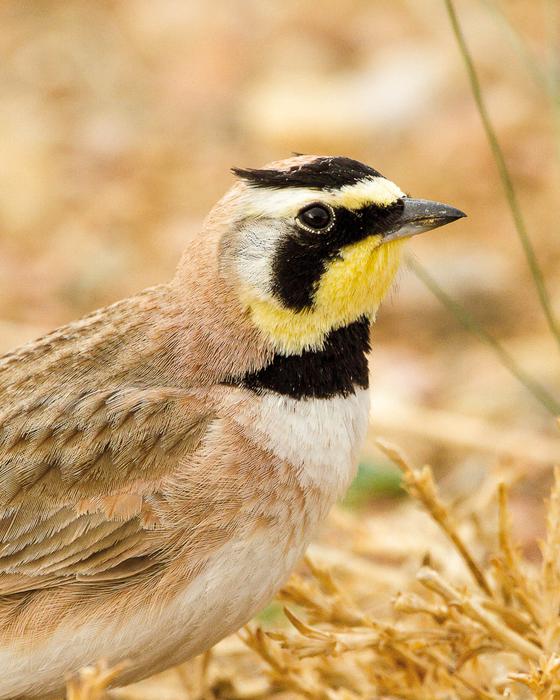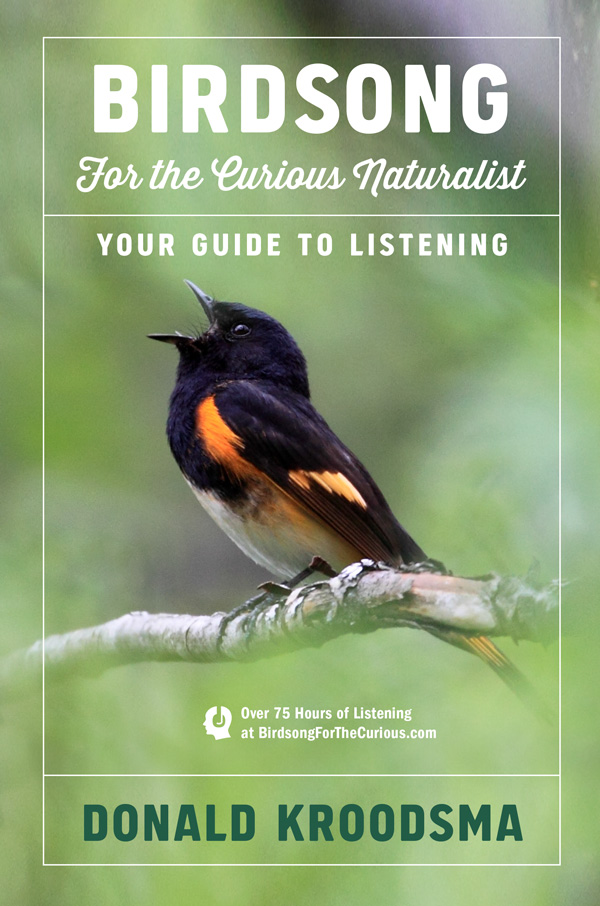Horned lark
Chapter 7: When to Sing, and How
Subchapter: Energized dawn singing
From page 114 in the book.

Photo by Wil Hershberger
♫481. Daytime "intermittent singing," a few stuttered notes that rise to a rapid, slurred flourish, with cattle. June 7, 2001. Marble Hot Springs Road, Sierra Valley, California. (1:59)
♫482. More daytime singing, same Sierra Valley 17 years later, still with cattle, and a touch of western meadowlark (initial note and later songs). Thirty stuttered flourishes over three and a half minutes. June 12, 2018. Sierra Valley, California. (3:31)
♫483. What a special singing performance these horned larks provide well before sunrise. The flourishes now occur only after long strings of lower notes, with up to five flourishes per minute (e.g., in the first minute they occur at 0:22, 0:30, 0:34, 0:37, 0:51; in the second minute at 1:03, 1:11, 1:20, 1:28, 1:47, though that last one sounds incomplete). This male sings from a gravel road, with me standing to the side; every once in a while he relocates (at 5:23, 8:45), especially when a car passes (at 17:50), and it takes me a little while to relocate him with the parabolic microphone. 4:40 to 5:03 a.m. Sunrise at 5:33 a.m. June 14, 2018. Sierra Valley, California. (22:41)
♫484. Another horned lark in the dark, again all air-time filled with four to five notes each second, punctuated with an occasional flourish. A lark bunting sings first, and at about 0:10 the song of the horned lark emerges to take center stage. 4:39 to 4:45 a.m. Sunrise at 5:31 a.m. May 27, 2006. Murphy's Pasture, Pawnee National Grassland, Colorado. (6:00)
